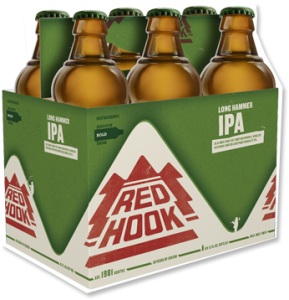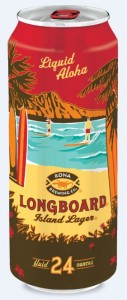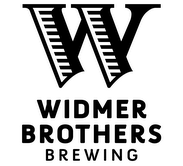
It plans to do more with less, reducing its SKUs by 27 percent and focusing on seven core brands. The hope is that by keeping things simple, the brand will receive better support from its distributors, who are struggling with an onslaught of new products.
In the last three years, the addition of more than 600 new craft breweries has helped to broaden consumer choice with a slew of new beer styles, brands and package formats. According to industry trade publication Beer Marketers Insights, over 1,000 new SKUs were added in each of the last three years. In fact, craft brewers introduced more than half of those new SKUs.
But while many distributors have celebrated and even championed the new craft offerings by adapting their business models to accommodate for the growth, some are beginning to ask their larger craft suppliers to keep things simple.
Instead of creating additional wholesaler complexities, CBA said it plans to scale back the production and distribution of many Redhook seasonals (eliminating some), and specialty Widmer Brothers offerings from the 924, Brothers Reserve and Rotator IPA series.
The company’s seven core brands will be Kona’s Longboard Lager and Big Wave Golden Ale; Omission Pale Ale/Lager; Redhook’s Long Hammer IPA and Audible Ale and Widmer’s new IPA Upheavel as well as that brand’s Alchemy Ale.
CBA will still focus on innovating new styles, but most new introductions will be produced in smaller quantities and distributed in Portland, Ore., Seattle, Wash., Kona, Hawaii and Portsmouth, N.H. — all markets where the company owns brewing facilities.
Additionally, CBA has broken its national footprint into three tiers: champion, building and aspiring. Champion markets — like Portland and Seattle — will receive the most investment and resources. Building markets, like Boston, will receive more attention than aspiring markets, like Atlanta, where the company doesn’t have adequate enough resources to grow its market share.
Within those markets, the company will focus on seven key accounts which are currently responsible for 40 percent of the company’s growth: Safeway, Publix, Walmart, Costco, Rite Aid, Kroger and Buffalo Wild Wings. Safeway, which accounts for 10 percent of CBA’s business, will become the company’s first 1 million case retailer in 2014. Publix is up 60 percent year-to-date and Buffalo Wild Wings is up 203 percent year-to-date. In 2013, CBA is up a combined 16 percent in all seven accounts and has sold 245,000 more cases year-to-date.
So what does this strategy mean for each brand?

“2014 is all about fueling the growth of Kona,” he said.
CBA said it plans to increase its overall marketing investment by 40 percent, a majority of which will be directed at growing the Kona brand. That means purchasing billboard space in home markets, continuing to increase its digital and social media spending and even airing television commercials in two yet-to-be-named markets.
“Consumers are looking for an opportunity and permission to slow down, click pause, stop and take a deep breath,” he said. “By encouraging consumers to pick up a Kona, Hawaii’s beer, we are giving people a chance to soak in some of that aloha spirit.”
That encouragement will manifest itself in the “Pau Hana” campaign, where CBA will ask beer drinkers to “leave work a few times zones behind.” CBA will also expand distribution of the Kona brand to four new states — Wisconsin, Mississippi, Kentucky and Michigan — and replace Wailua Wheat with Castaway IPA. They’ll also launch a 12-pack of Big Wave golden ale in “more developed markets” on the west coast.
Still, most of CBA’s focus on the Kona brand will be on Longboard Lager and Big Wave, which together have accounted for 75 percent of Kona’s gains so far this year.

“Our 2014 plan is doing what is right for the brand and letting it be what it should be,” said Brady Walen, the Widmer brand manager.
Widmer will also introduce a new year-round IPA, Upheaval, to take advantage of an IPA category that is up 42 percent year-to-date and 14 percent of the total craft segment.
Both the Kona and Widmer brands are targeted at existing beer drinkers. For Kona, the brand aims to capture import drinkers, while Widmer’s goal is to get the attention of hard-core craft beer consumers.
Redhook, on the other hand, is going to focus on the “crossover” craft beer drinker, who might trade up to an accessible beer with fuller flavor, using strategic partnerships with Buffalo Wild Wings and The Chive, as well as media partner the Dan Patrick Show.
“Redhook will be the craft beer crossover choice in 2014,” said Karmen Olson, the Redhook brand manager. “Our strong brand personality gives us a platform for reaching crossover drinkers.”
In an effort to capture those crossover consumers, Redhook will launch a nationwide “crushletics” campaign, touting the brand as “the official beer of one-handed sports.” They’ll ask customers to submit their most offensive pickup lines via the hashtag “#bestoffensiveline.” They’ll search for the “King of Cornhole,” and even invite drinkers to challenge radio personality Dan Patrick to a game of “H-O-O-K.”
Redhook will focus on growing Audible Ale and maintaining the growth for Long Hammer IPA, which is up 14 percent and is currently the no. 4 best-selling IPA in the country.
“If Dan Patrick gets us access to sports fans across the country, Buffalo Wild Wings gets us access to sports fans when they are actually drinking,” said Olson.
Redhook has already sold 130,000 case equivalents at Buffalo Wild Wings and its Game Changer offering is the no. 5 draft beer after only being introduced in May.
Game Changer is helping to grow sales for other brands at Buffalo Wild Wings, Olson said. Before Game Changer launched, Long Hammer IPA sales were up 63 percent in the chain. After putting Game Changer on tap, Long Hammer sales spiked, and are now up 115 percent for the year, highlighting the potential for future volume gains across the entire Redhook portfolio.
As for CBA’s Omission line and its Square Mile Cider, the company is trying to grow distribution.
For Omission, which is currently recognized as “gluten-free” inside Oregon but is sold as “gluten-removed” elsewhere, CBA’s mission is to get distributors behind its offering rather than Red Bridge, a gluten-free offering made by Anheuser Busch, which also is a minority owner of CBA. CBA has asked its 500-plus Anheuser-Busch wholesale partners to increase points of distribution for the malted barley-based Omission, saying that it should be on the shelf next to every placement of sorghum-based Red Bridge.
Gelfand claims that Omission outsold Red Bridge 3-to-1 last year and accounts for 70 percent of revenue growth in the gluten-free beer category.
“Of all the stores selling beer in the U.S., gluten-free beer is in 25 percent of them,” said Lorin Gelfand, the company’s director of new brands and innovation. “Red Bridge is in all of them and Omission is in 10 percent of them.”
For Square Mile, new markets and new packages are on tap for early 2014. CBA will expand the brand to eight total markets, adjust its pricing, and add 6-packs.
